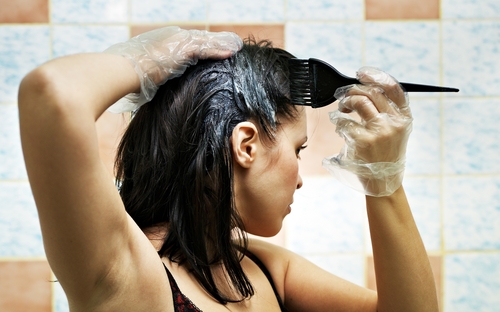by Derrick Cruise
Although hair coloring is commonly considered a harmless treatment, new research suggests that the chemicals used in many hair dye products could potentially be linked to a heightened risk for various types of cancer.
According to the American Cancer Society, hair dye can be categorized into three different groups: temporary, semi-permanent, and permanent or oxidative. The latter two groups tend to pose the greatest risk for cancer because these dyes have a higher concentration of potentially dangerous chemicals.
Some potentially hazardous chemicals found in hair dyes include:
- ammonia
- peroxide
- para-phenylenediamine
- coal tar
- lead
- toluene
- resorcinol.
Although some hair dye products still include these chemicals in their formulas, studies conducted by The National Toxicology Program and The Food and Drug Administration have led to much better regulation of these chemicals in most modern hair coloring products.
Hair Dye and Cancer
Further studies have shown that individuals who are exposed to hair dyes at work, in an occupation such as a hairdresser or a barber, have a slightly higher risk of developing bladder cancer than the average person. Although this finding might suggest that regular exposure to hair dye would also lead to an increase in bladder cancer risk for individuals outside of these environments, researchers have found no evidence to support this assumption.
Blood-related cancers such as leukemia and lymphoma may also be linked to hair dye use. The American Cancer Society explains that some studies have found an increased risk for non-Hodgkin lymphoma in women who have used hair dyes, especially those who have been using since 1980 and those who regularly use darker pigments. Similar results have been found for leukemia risk. It should be noted that additional studies have found no correlation to hair dye use and blood-related cancers, causing experts to conclude that the existing risk is likely very small.
Continuing this positive news, the majority of studies have shown that hair dye use has not proven to increase the risk of breast cancer in women. With the general high risk and prevalence of breast cancer in women, it is fortunate that the need for breast cancer treatment is not correlated with this popular beauty trend. Many women concerned with this risk, need not worry. Dying hair after treatment, if desired, is also safe.
Although this research isn’t exactly comforting for hair dye enthusiasts, there are many safer and effective alternatives available for those who want to keep their color while leaving the risks behind. Several salons are committed to only using hair dye products that are made from natural substances and free from harmful chemicals.
Finding Safer Hair Dye
John Masters, a salon in New York City, boasts hair dyes that are herbal-based, low-PPD, and free from lead, toluene and coal tar to give individuals an effective alternative to chemical-based coloring products.
Aveda salons also offer a less toxic alternative with their patented hair dye formulas that utilize natural green tea extract to oxidize the dyes instead of synthetic ingredients. Some safer, at-home hair dye alternatives to check out include:
- Herbatint
- Light Mountain
- Surya Henna
- Naturcolor
- Rainbow Henna
Because the link between cancer growth and hair dye is tenuous, it’s important to understand what’s fact and what’s fiction.
Image Credit: Hair Dye photo via Shutterstock


